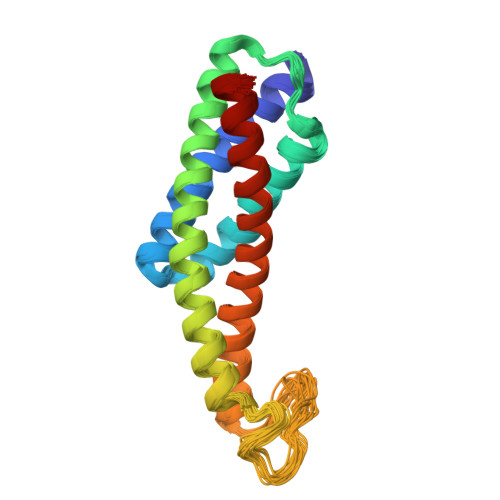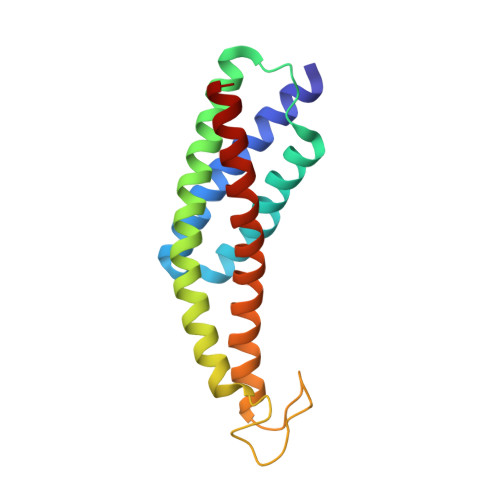Recognition and targeting mechanisms by chaperones in flagellum assembly and operation.
Khanra, N., Rossi, P., Economou, A., Kalodimos, C.G.(2016) Proc Natl Acad Sci U S A 113: 9798-9803
- PubMed: 27528687
- DOI: https://doi.org/10.1073/pnas.1607845113
- Primary Citation of Related Structures:
5KP0, 5KRW, 5KS6 - PubMed Abstract:
The flagellum is a complex bacterial nanomachine that requires the proper assembly of several different proteins for its function. Dedicated chaperones are central in preventing aggregation or undesired interactions of flagellar proteins, including their targeting to the export gate. FliT is a key flagellar chaperone that binds to several flagellar proteins in the cytoplasm, including its cognate filament-capping protein FliD. We have determined the solution structure of the FliT chaperone in the free state and in complex with FliD and the flagellar ATPase FliI. FliT adopts a four-helix bundle and uses a hydrophobic surface formed by the first three helices to recognize its substrate proteins. We show that the fourth helix constitutes the binding site for FlhA, a membrane protein at the export gate. In the absence of a substrate protein FliT adopts an autoinhibited structure wherein both the binding sites for substrates and FlhA are occluded. Substrate binding to FliT activates the complex for FlhA binding and thus targeting of the chaperone-substrate complex to the export gate. The activation and targeting mechanisms reported for FliT appear to be shared among the other flagellar chaperones.
Organizational Affiliation:
Department of Biochemistry, Molecular Biology and Biophysics, University of Minnesota, Minneapolis, MN 55455;


















